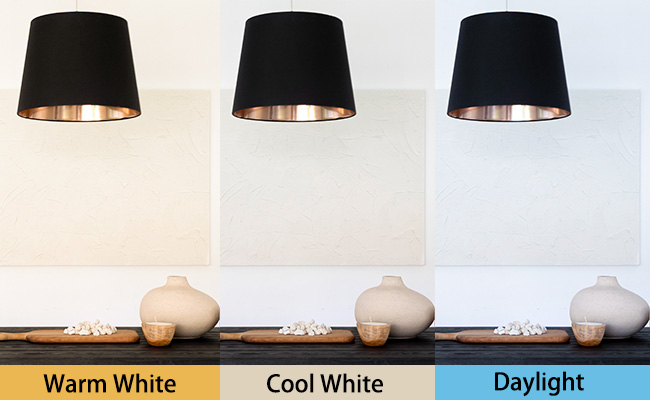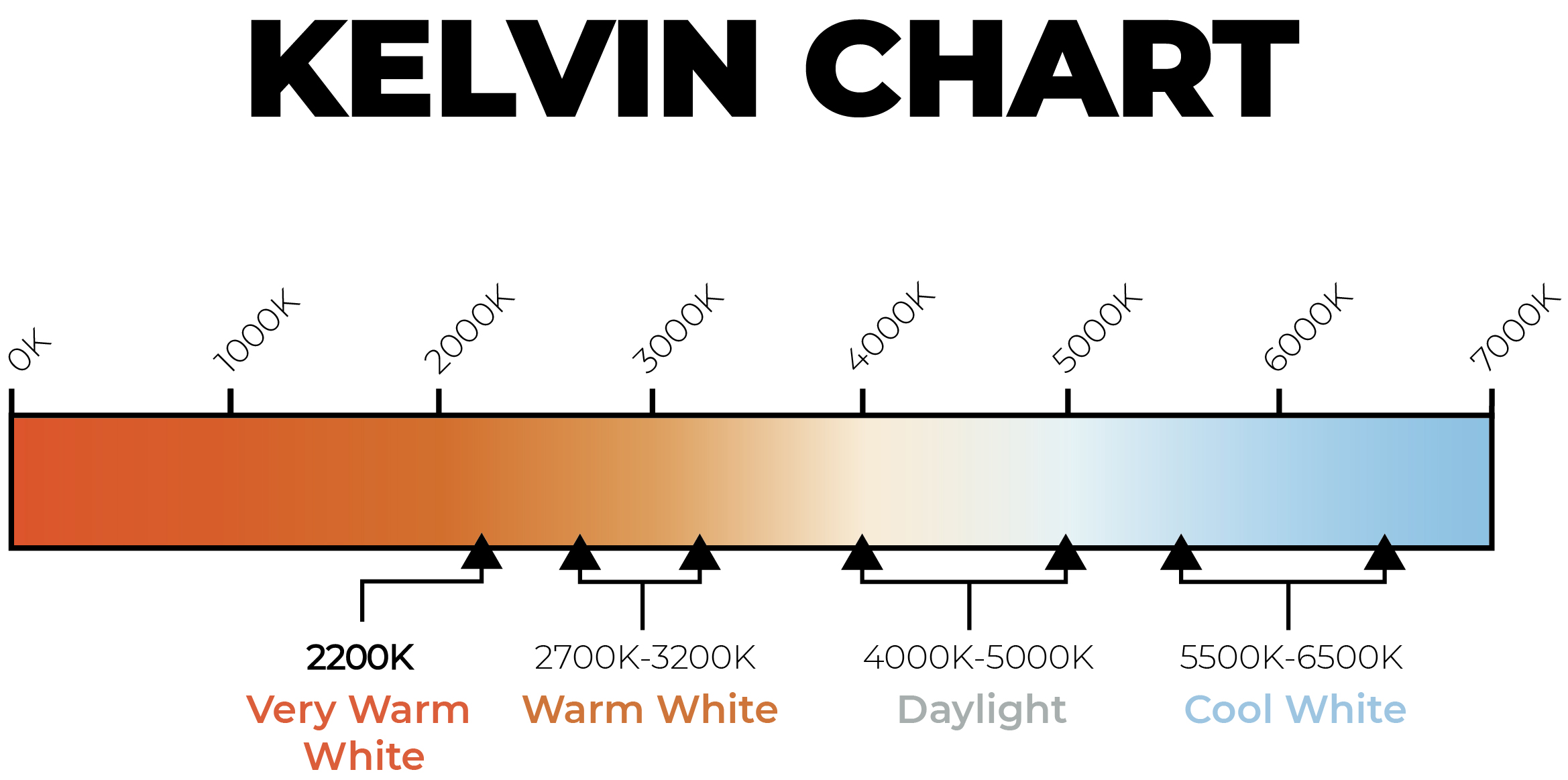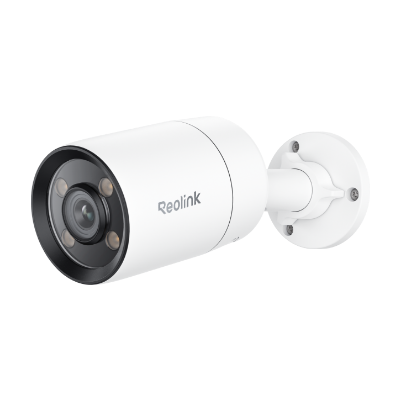Color Temperature of LED Light: A Complete Guide

When it comes to creating the perfect lighting environment, understanding LED light color temperatures is key. Color temperature not only affects the visual appeal of a space but also influences things like mood and productivity.
Whether you're setting up lighting for your home, office, or another space, having a comprehensive understanding of color temperature will help you create the ideal environment.
We’ll take you on an illuminating journey through the shades of LED light color temperature so you can have a better understanding of its impact on our day-to-day activities.
What is Color Temperature?
Color temperature refers to the hue of light and is typically expressed in units of Kelvin (K) which ranges from 1,000K to 10,000K on the Kelvin scale. It is a way to describe the color appearance of light, ranging from warm to cool. Objects emit different colors of light when heated to different temperatures. As the temperature increases, the light shifts from red to orange, yellow, and finally to blue.
In the context of artificial lighting, color temperature helps determine the mood and ambiance of a space. For example, light sources with lower color temperatures (around 2,700-3,000K) emit warm, yellowish light resembling the glow of candlelight, creating a cozy and intimate atmosphere.
On the other hand, higher color temperatures (around 5,000-6,500K) produce cooler, bluish-white light similar to daylight, which is often preferred for task-oriented or clinical settings. Understanding color temperature is crucial in selecting the appropriate lighting for different environments.
Here are some examples of color temperatures we can observe in everyday life:

What Is LED Color Temperature?
LED color temperature refers to the color appearance of the light emitted by LED (Light Emitting Diode) light sources. It is a measurement of the perceived color of the light produced by a LED bulb or fixture. LED color temperature is also expressed in units of Kelvin (K) and helps determine whether the light appears warm or cool.
The Kelvin temperature scale for LED color temperatures ranges from 2700K to 6500K. There are numerous color temperatures labeled within that range. Here’s a comparison:
Which Is The Best LED Lighting Color Temperature?
Each environment has an ideal LED color temperature depending on whether the environment favors a warm or cool hue.
Where to use 3000K color temperature?
LED lighting in the 3000K color temperature range is a yellow-white warm color and is often used for:
-
Residential lighting: 3000K is commonly used in bedrooms, living rooms, and dining areas. The warm white light creates a cozy and inviting atmosphere, making it ideal for relaxation, socializing, and intimate settings.
-
Spas and hotel lobbies: Many spas, hotels, and hospitality venues opt for 3000K lighting as it enhances the warmth and comfort of the space. It can create a welcoming and pleasant environment for guests, promoting a relaxing dining or social experience.
-
Residential outdoor lighting: Warm white lighting can be a good choice for outdoor areas such as garden lighting. It can create a relaxed and inviting atmosphere for outdoor gatherings or relaxation, blending well with natural surroundings.
Where to use 4000K color temperature?
LED lighting in the 4000K color temperature range is closer to natural daylight and is often used for:
-
Workspaces: 4000K lighting is often used in office environments and workspaces. The neutral white light can promote focus, alertness, and productivity. This color temperature also helps create a professional and efficient atmosphere, aiding in tasks such as administrative work, paperwork, and computer usage.
-
Hospital offices and hallways: In the hospital offices, this balanced lighting helps create a soothing and comfortable atmosphere for patients, relieving their anxiety. For navigating busy hospital hallways, a color temperature of 4000K can provide good visibility and clarity.
-
Educational institutions: Schools, colleges, and universities often choose 4000K lighting for classrooms, libraries, and study areas. The neutral white light can facilitate concentration and reading comprehension.
Where to use 5000K color temperature?
LED lighting in the 5000K color temperature range represents the brightest and coolest color temperature, closely resembling direct sunlight and is often used for:
-
Commercial and retail spaces: 5000K lighting is commonly used in commercial and retail settings, such as supermarkets, warehouses, and automotive showrooms. The cool white light enhances visibility and showcases products with clarity and accuracy. It can make displays appear vibrant and help shoppers see the details of the merchandise.
-
Sports and recreation facilities: Sports arenas, stadiums, gyms, and recreational facilities often use 5000K lighting. The intense and bright illumination helps enhance visibility for participants and spectators, ensuring optimal performance and an enjoyable experience.
-
Surgery rooms: 5000K lighting is commonly used in surgical settings. It provides enhanced visibility, accurate color rendering, reduces eye strain, contributes to a sterile environment, and helps maintain surgical precision. The cool white light aids surgeons in performing precise procedures and ensuring optimal patient safety.
-
Art and photography: Artists, photographers, and galleries may choose 5000K lighting for accurate color rendering and showcasing artwork. The cool white light helps reveal intricate details, textures, and true color representation.
-
Car lighting: This color temperature provides bright illumination, enhancing visibility and making it easier to see the road and surrounding objects.
How Does LED Color Temperature Affect Us?
It’s well-researched that health and emotions are strongly influenced by light. Next, we’ll investigate how color temperature impacts our daily lives.
Emotional effect
-
Warm temperature: A warm temperature refers to a light source below 3000K that has more red hues in the light. It evokes feelings of coziness, comfort, and relaxation. It creates a soothing and intimate atmosphere, fostering a sense of calmness and nostalgia.
-
Neutral light: Neutral light is around 3500K-4000K. At this temperature, red, green, and blue lights are balanced. This creates a calm and neutral atmosphere without conjuring any specific emotional tone. It promotes a sense of tranquility, adaptability, and visual comfort.
-
Cool white light: Cold light has 5000K-6000K and has more blue tones. It promotes alertness, focus, and a modern ambiance. It also energizes and invigorates, creating a vibrant atmosphere. However, it may lack the warmth and coziness associated with warmer lighting.
Influence on visual perception
Color temperature influences our visual perception by affecting color rendering, contrast, depth perception, visual acuity, and spatial perception.
Cooler temperatures enhance color saturation, provide higher contrast, and improve visual acuity, making objects appear more vibrant and detailed. However, warmer temperatures create softer lighting, reduce contrast, and can also impact spatial perception.
Influence on sleep
Color temperature, particularly bright and cool white light with higher color temperatures (5000K-6000K), can disrupt sleep patterns by suppressing melatonin production. Blue light, found in cool white light, has the strongest impact on sleep and can interfere with falling asleep and sleep quality.
Using warm white light with lower color temperatures (2700K-3000K) in the evening promotes better sleep as it contains less blue light and signals the body to wind down. Consider minimizing exposure to bright, cool white light before bedtime for optimal sleep.
How To Change Color Temperature Of LED Lights?
To adjust the color temperature of LED lights, there are various methods and technologies available that allow you to customize the lighting ambiance to your desired warmth or coolness.
Using LED bulbs with adjustable temperature
Some LED bulbs are designed to have adjustable color temperatures. These bulbs often come with a switch or remote control that allows you to select different color temperature settings. By switching between options like warm white, cool white, or daylight, you can customize the lighting ambiance.
Using smart lighting systems
Smart lighting systems, such as those controlled by smartphone apps or voice assistants, often offer color temperature adjustment as a feature. These systems typically require smart LED bulbs or compatible fixtures. Through the app or voice commands, you can change the color temperature to suit your needs.
Changing the voltage
The voltage applied to LED lights has a direct correlation with their color temperature. When the voltage is decreased, the lights become more yellow, and when it is increased, they become bluer.
Changing the substance of LEDs
The materials used in LEDs determine the color temperature and wavelength. Manufacturers can alter the light hues by using different materials such as YAG (Yttrium Aluminum Garnet) and LEPs (Light-Emitting Polymers).
Adjust the distance between LEDs
By reducing the distance between LEDs of the same color temperature, the area emitting white light can be reduced, thus increasing the average color temperature. To achieve this effect, lights must be installed close together.
Modify the color temperature of the surface
By applying paints or pigments with warm or cool undertones, you can visually manipulate the color temperature the LED gives off.
Application Of LED Lights On Security Cameras Based On Color Temperature
The color temperature of LED lights used in security camera can greatly impact the effectiveness of surveillance footage.
How does LED light work on security cameras?
The LED light emits a high level of infrared light (usually at 850 nm) to the object, and the camera lens then detects the reflected infrared radiation (IR) and produces an image. While most security camera footage is captured in black and white, there are excellent Full-Color Night Vision cameras on the market. We recommend the following:
True Color Night Vision Camera with 3000K Adjustable Warm Light
CX410 is a 2K PoE camera with true color night vision. This camera is equipped with an F1.0 aperture and 3000K adjustable warm light. The wider aperture enables better visibility and image quality in low-light environments. Meanwhile, the light enables the camera to take even more gorgeous full-color nighttime pictures in extremely dim lighting. It also results in a more natural appearance of objects and individuals in the images recorded.
2K PoE ColorX Night Vision Camera
2K 4MP; F1.0 Super Aperture; ColorX True Full Color Night Vision; 3000K Adjustable Warm Light; Advanced 1/1.8'' Sensor; 2-Way Audio.
Additionally, 3000K warm light is more discreet and won’t cause a spotlight or glare on the areas under surveillance.
FAQs
1. What color light temperature do plants grow best in?
Plants grow best under a combination of warm white and cool white light. Warm white light (2700K-3500K) promotes flowering and fruiting, while cool white light (5000K-6500K) stimulates vegetative growth. Full-spectrum lighting, encompassing a balance of warm and cool white along with other colors, is beneficial for overall plant health. However, specific color temperature requirements may vary among plant species and growth stages.
2. How does an LED light bulb work?
LED light bulbs work by passing an electric current through semiconductor materials, causing electrons to combine with "holes" and release energy in the form of photons. This process, known as electroluminescence, produces visible light. The color of the light emitted is determined by the properties of the semiconductor material.
3. Which color temperature is best for the eyes?
The best color temperature for eyes varies among individuals, but generally, a color temperature of around 4000K to 5000K is considered comfortable. Lower color temperatures create a cozy ambiance but may not offer optimal visual clarity, while higher color temperatures provide brighter illumination for tasks requiring focus.
4. What are LED temperatures in Celsius?
LEDs have an operating temperature range measured in degrees Celsius (°C). LED temperature ranges can typically be from -40°C to 100°C or higher, as specified by the manufacturer. Proper thermal management is important to maintain optimal performance and maximize the LED's lifespan.
5. What is CCT?
CCT stands for Correlated Color Temperature. It is a metric used to describe the color appearance of a light source, specifically the color temperature measured in Kelvin (K). CCT is used to classify light sources on a scale from warm to cool.
Conclusion
The color temperature of LED light is a crucial factor in shaping the mood and functionality of a space. By selecting the appropriate color temperature, whether warm or cool, we can create customized lighting solutions to suit our needs.
Understanding and utilizing the power of color temperature allows us to transform and enhance our surroundings, evoking the desired emotions and visual appeal. By embracing the art of color temperature and harnessing the potential of LED light we can illuminate our world with beauty and functionality.
If you have other color temperature suggestions to share with us, please comment below!
Search
Subscribe for the Latest Updates
Security insights & offers right into your inbox

